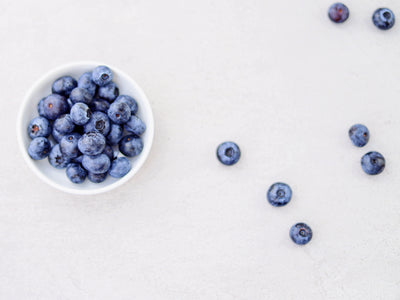Four Things to Forage Now: A Guide to Harvesting Autumn’s Hedgerows

Memorably named the season of ‘mists and mellow fruitfulness’ by Keats, autumn offers a rich feast for foragers of wild food. With trees sporting berry-bejewelled branches and hedgerows laden with nuts and seeds, it’s at this time of year that nature’s larder comes alive.
On a balmy September day, the Conscious Spaces team embarked on a foraging walk with wild food expert Rachel Lambert of Wild Walks Southwest. Following a circular route, our ramble took in the coast around Mylor, a Cornish village nestled amongst the network of creeks that flow into the Fal river. We were rewarded with a bounty of botanical delicacies, including sea spinach, sloes, sorrel, rosehips, alexander seeds and blackberries.

Whilst we’ve long been advocates of living off the local landscape, this recent walk with Rachel got us thinking about just how important wild foods are for wellbeing. So, with winter knocking at the door and cold and flu season fast approaching, we’re taking a closer look at what foraging can do for your health, and choosing our top four immune-boosting, vitamin-packed plants to pick now.
Why forage?
Harking back to our hunter-gatherer days, foraging allows the possibility to discover delicious and health-enhancing ingredients on your doorstep.
Tom Hunt, the author of Eating for Pleasure, People & Planet, recently wrote[1] that “foraged foods are an untapped, hyper-nutritious local food source that adds diversity to our diet for no cost other than a stroll out in the garden or walk to the park.”
Given the increasing interest in the provenance, sustainability and freshness of our food – and a growing desire to distance ourselves from the plastic-wrapped, pesticide-ridden products on supermarket shelves, what could be better than knowing the exact location where the things on your plate grew, entirely organically?
Offering elemental flavours and textures, foraging provides the perfect opportunity to foster a deeper connection with your environment – making you feel a part of nature’s seasons and cycles, rather than a distant bystander.
Foraging isn’t the preserve of country bumpkins, either. Rich-pickings can be found in urban parks, paths and patches of woodland. Even the average back garden harbours a whole host of free food that is good for you; from nettles to chickweed and dandelion leaves.
If the nutritional benefits of foraging aren’t enough to convince you, its spirit-soothing qualities might be. Mindful moments spent absorbed in nature are ideal for quieting an overactive, anxious mind.
And, as long as you follow a few simple rules – only harvesting from plentiful species, for instance – there’s no need to worry that you’re picking things you shouldn’t. As Daniel Butler, a mycologist and forager from mid-Wales says[2]:
“Since the Norman conquest we have all had certain foraging rights. Provided we are in a place where we are entitled to be, like a footpath, nature reserve, Forestry Commission woodland or urban park, we can gather flowers, foliage, fruit and fungi for personal consumption.”
It’s important, of course, to only forage things that you are 100% confident you can identify, as some plants and fungi can be deadly. Keep a good field guide to hand to help identify your finds, and, if in doubt – leave it out.
All that’s left to do is grab a basket and get out there!

Four Things to Forage for Strengthened Immunity
ELDERBERRIES
The transformation of elderflowers to elderberries signals the swan song of summer. These small, glossy, purple-black berries grow in generous clusters on the pink-tinged stems of the elder tree.

Why they’re so good for you:
Bursting with vitamin C and antioxidants, research suggests that elderberries could help to strengthen the immune system, fight inflammation, and lessen the impact of viruses.
Just last year, a study[3] at the University of Sydney found that compounds from elderberries can directly prevent the influenza virus’s entry and replication in human cells, and can help strengthen a person’s immune response to the virus. "What our study has shown is that the common elderberry has a potent direct antiviral effect against the flu virus," said[4] Dr. Golnoosh Torabian.
When and where to find them:
As summer ebbs into autumn, elderberries can be seen peppering woods and hedgerows and lining country lanes and city verges and scrubland.
Elderberries are a staple in the diet of many birds and small mammals, and elder trees will crop up anywhere the berries get dropped by wildlife.
How to eat them:
Stick to the flowers and berries: the rest of the plant is poisonous. Use the prongs of a fork to strip the berries off the stalks. Always cook the berries before eating as they can make you nauseous if nibbled when raw.
Elderberries make excellent cordial, wine, and jam, and can be used to liven up a bottle of gin.
BLACKBERRIES
Rootling through bushes for blackberries instantly evokes childhood memories of juice-stained hands and warm crumble puddings.
Not all hedgerow finds can be eaten in their natural state, but wild blackberries are delicious plucked straight from the bramble. This, coupled with the fact they’re so plentiful and easy to identify, makes blackberries an excellent introduction to foraging.

Why they’re so good for you:
These juicy black knots, plump from summer’s sun, are full of flavour and packed with vitamins C, A and E. They’re also a great source of vitamin K and manganese, as well as being high in fibre – which is essential for good gut health. Blackberries have been shown to have significant antioxidant activity, thanks to the high levels of bioactive compounds they contain.
One study showed that a specific extract found in blackberry juice offered protective effects against heart disease[5]. Another study by the European Journal of Nutrition[6] also found that thanks to their polyphenol content, eating wild blackberries could provide a protective effect on the brain. Meanwhile, a 2013 study by the Journal of Periodontal Research[7] found that blackberries demonstrated antibacterial properties, as well as anti-inflammatory and anti-viral effects.
When and where to find them:
Blackberries are extremely common in the wild. The resilient brambles that sprout clusters of these glossy berries can thrive almost anywhere, from woodlands to hedgerows, heaths to wasteland.
The first blackberries usually start appearing in late summer in the UK, peaking by early autumn. For the sweetest flavour, pick them once they’ve reached a deep purple-black, but before autumn rains have dulled their gloss (and avoid any berries that sit too close to the ground and the dog wee danger zone).
How to eat them:
The sweet-tart flavour of the blackberry works wonderfully in a wide array of recipes, such as sauces, pies, crumbles, liqueurs, coulis and jams. Wild blackberries keep for 2-3 days in the fridge, so only wash them just before you want to use them. Blackberries also freeze well, extending their shelf life.
SLOES
Grown on a spiky hedgerow shrub known as the blackthorn, sloes are rotund inky-blue berries. Whilst from the same family as the plum, raw sloes are much tarter to taste – with a mouth-puckering, sour flavour.

Why they’re so good for you:
Fresh sloes are packed with vitamin C and vitamin E and are a source of potassium, calcium and magnesium. Sloes are also rich in[8] phenols and flavonoids: antioxidant, disease-fighting compounds. Thanks to their high vitamin C and antioxidant content, sloes have traditionally been used to treat coughs and colds, and are believed to have anti-bacterial and anti-viral properties.
When and where to find them:
There’s much debate over when to pick sloes. Some say, for the best flavour, you need to wait until after the first frost has softened their skins, but sloes can be picked anytime from the end of September to December. As long as they’re ripe (ripe sloes will squeeze easily between your fingers and their skin will be dark), they’re good to gather.
Look for blackthorn plants in hedgerows, at the edges of woodland, scrubland and on cliff slopes, and bring a pair of gardening gloves to help protect against the plant’s sharp spines. Mimic the effects of a frost by placing your sloes in your freezer after picking.
How to eat them:
The best-known sloe recipe has got to be sloe gin. A resplendent, ruby-coloured liqueur, sloe gin makes a warming addition to any festive occasion. Sloes also make fabulous jams and can be used to make syrup. Remove all leaves and stems and wash the fruit before using it.
ROSEHIPS
These cheerful, compact, orangey-red fruits are the seed pods of rose plants. Often found fattening in hedgerows, depending on the type of rose (although most wild rosehips come from the dog rose), they might be elegantly oval-shaped or round, waxy or hairy, and grow to about one or two centimetres long.

Why they’re so good for you:
Rosehips are particularly rich[9] in disease-fighting antioxidants such as vitamin C, quercetin and ellagic acid, which can help lower inflammation and oxidative stress in the body, as well as strengthen immunity – helping you to stave off winter colds and flu.
When citrus fruits were scarce during World War II, rosehips provided a valuable alternative source of virus-fighting vitamin C, with scientists discovering that rosehips contain up to twenty times more of vitamin C than oranges. The Ministry of Food hastily published recipes for rosehip syrup, whilst volunteers were asked to harvest huge quantities of hips from hedgerows to meet demand.
Rosehips have specific anti-inflammatory action[10] and have been proven to help ease symptoms of arthritis. They also contain a high concentration of flavonoids, which have been shown[11] to reduce blood pressure and to improve blood flow to the heart.
Rosehips get their vibrant orange-red colour from carotenoid pigments which can help to promote healthy skin[12] and eyes.
When and where to find them:
Rosehips provide a welcome splash of scarlet along hedgerows, woodland fringes and scrubland from September to November.
In the UK, the dog rose – a climbing plant with long, thorny stems and soft-pink flowers – is the most common type of wild rose, and produces striking red, oval-shaped hips. Other types of rose – to be found in urban parks and gardens – sport hips of differing shapes and shades, from fat and tomato-like to deepest maroon or even coral pink. By the time the hips are ready to harvest, the leaves will often have fallen from the rose bush, leaving bare branches.
It’s best to wear gloves to pick rosehips to spare your fingertips from sharp thorns. Carefully twist or snip the hips near the base of each pod. Pick rosehips when they turn fully orange or red with no traces of green, and always make sure you have correctly identified your pickings.
How to eat them:
Tangy, fruity rosehips are delicious made into a simple syrup, great for drizzling over porridge, yoghurt, ice cream or pancakes. They are also good in jams, cordials, wines and delicately flavoured jellies – or used to infuse spirits such as gin or vodka.
Before cooking with rosehips, you’ll need to remove the tiny hairs found inside the pod (traditionally used by schoolchildren to make ‘itching powder’!) that could otherwise irritate your throat. To do this, strain the hips through a jelly bag, or a double layer of muslin.
References
- https://www.theguardian.com/food/2020/mar/21/free-veg-the-many-uses-of-nettles-and-dandelion-leaves
- https://www.theguardian.com/environment/2016/sep/11/autumn-weather-climate-fruit-birds-bees-harvest-trees
- https://www.sciencedirect.com/science/article/abs/pii/S1756464619300313?via%3Dihub
- https://www.sciencedaily.com/releases/2019/04/190423133644.htm
- https://pubmed.ncbi.nlm.nih.gov/12818719/
- https://pubmed.ncbi.nlm.nih.gov/22314351/
- https://pubmed.ncbi.nlm.nih.gov/22812456/
- https://www.researchgate.net/publication/268220442_Phenolic_Components_and_Antioxidant_Activity_of_Prunus_spinosa_from_Gumushane_Turkey
- https://pubmed.ncbi.nlm.nih.gov/28587101/
- https://pubmed.ncbi.nlm.nih.gov/22762068/
- https://www.ncbi.nlm.nih.gov/pmc/articles/PMC6315948/
- https://www.ncbi.nlm.nih.gov/pmc/articles/PMC3257702/






































